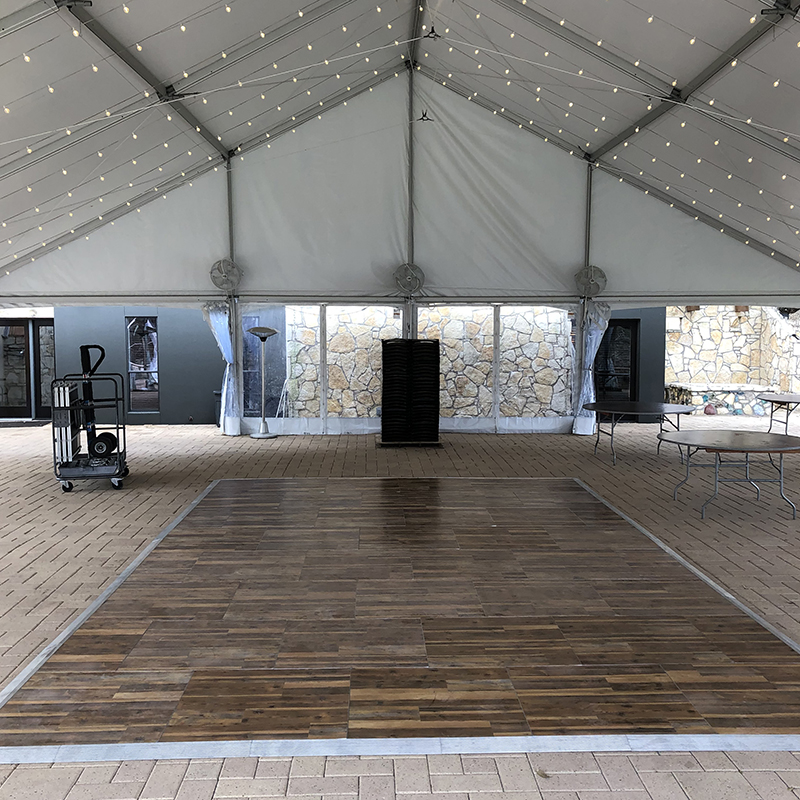Choosing the appropriate components for constructing a durable and safe external performance surface is crucial for guaranteeing an enjoyable session. Exterior movement platforms must endure diverse weather conditions while providing a stable surface for dancers and attendees. Therefore, it is essential to consider factors such as material durability, safety features, and maintenance demands when making selections. This article will examine several suitable materials and their advantages in designing an outdoor dance floor.
One common option for outdoor dance floors is wood. Lumber offers a traditional and inviting appearance that many consider attractive. Hardwoods like maple or oak are particularly preferred due to their strength and ability to cushion impact, which can protect dancers’ joints. Additionally, wood has natural anti-slip qualities when treated correctly, minimizing the chance of accidents. However, maintaining a wooden dance floor demands regular coating and resurfacing to shield it from moisture and UV exposure, making it critical to account for the climate in which the floor will be installed.

Another practical option is composite materials, which combine natural fibers with polymers. These materials are engineered to be resistant to moisture, mold, and discoloration from UV exposure. Synthetic dance floors provide longevity similar to traditional wood without the extensive upkeep. They are more resistant to warping and splitting than natural wood floors when exposed to harsh outdoor conditions. In addition, composite surfaces often have integrated slip resistance features, making them a safer choice for outdoor events.
For those try these out looking for a more contemporary solution, interlocking tiles made of polyvinyl chloride or elastomer are reliable options. These tiles are crafted for hassle-free setup and can be rearranged or replaced as needed. The flexibility of using interlocking tiles permits rapid assembly and breakdown, making them ideal for temporary dance venues or festivals. Additionally, these flooring types provide shock absorption that improves support while dancing and reduces the risk of injuries resulting from falls. The sealed structure of PVC and rubber also inhibits water absorption, additionally extending the lifespan of the flooring.
Finally, it is vital to consider the location and intended use of the exterior dance floor when selecting components. For instance, if the dance floor will be installed in a heavily used area or subjected to harsh weather frequently, opting for durable surfaces that require low upkeep will be essential. On the other hand, for less intense use or in more protected areas, less heavy options may be adequate. In any case, emphasizing safety aspects such as traction and shock absorption should stay at websites the forefront of planning.
In conclusion, building a durable and secure outdoor dance floor involves careful consideration of various materials appropriate for different settings and applications. Timber provides classic aesthetics but demands consistent care; engineered composites blend appearance with resilience; interlocking tiles provide versatility and ease of use. At the end of the day, identifying the unique requirements of the dance floor's planned use will inform material selection toward selecting the most appropriate material for an enjoyable and safe dancing experience outdoors.